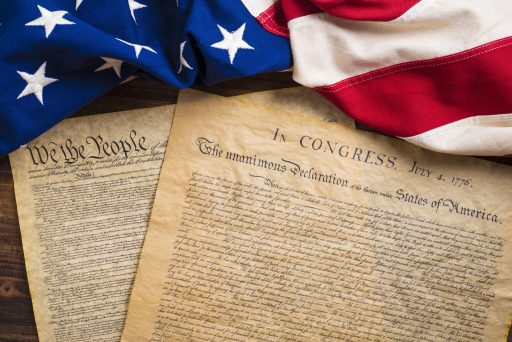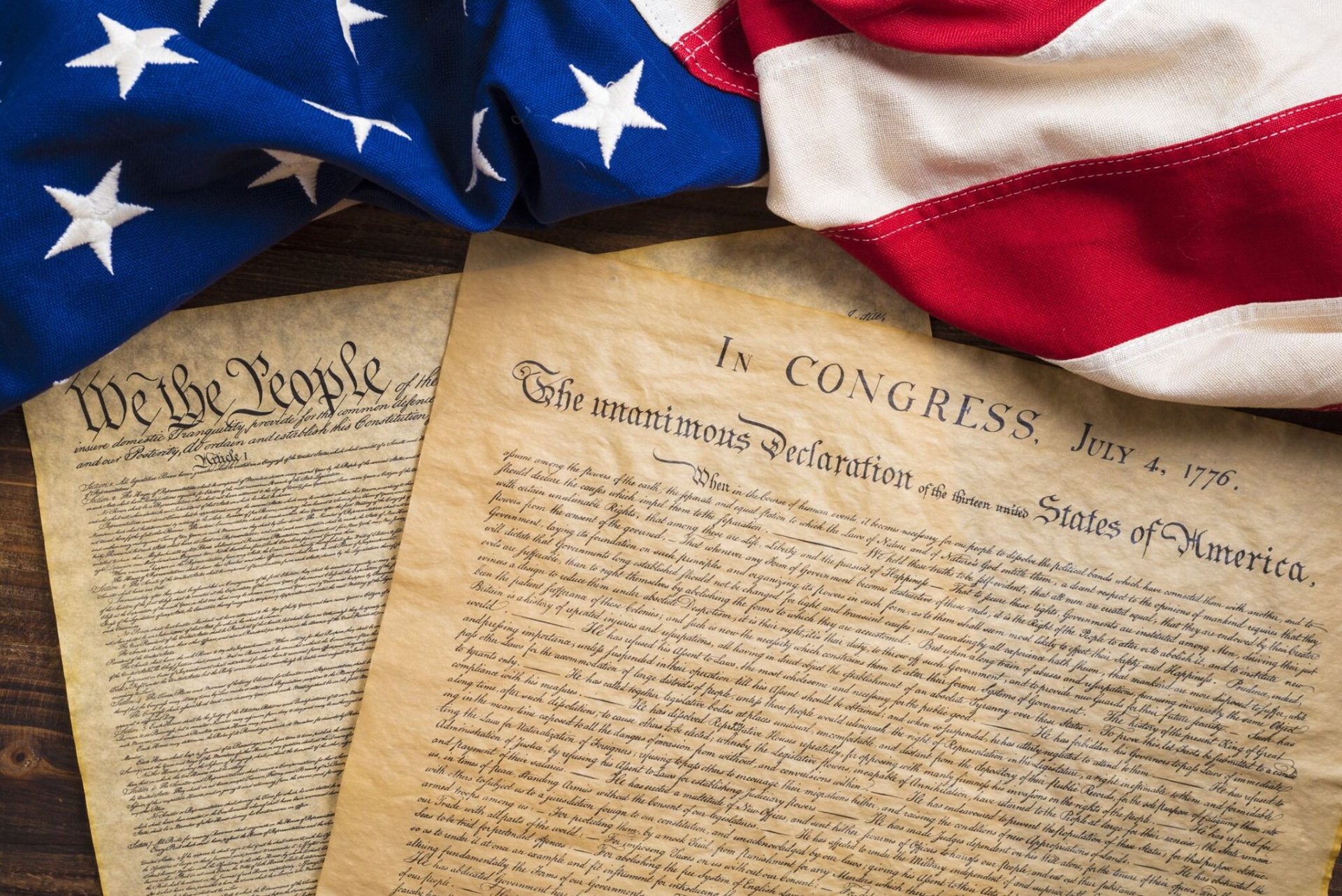The Amendment Process
The Constitutional Convention of 1787, representing the collective wisdom of generations of political philosophers, gave the United States a unique form of government. The clauses of the Constitution were the product of stringent debate and purposeful deliberation, and every granted power, limitation, and operational mechanism chosen by the Founders was judged to be superior to the available alternatives.
The Founders also recognized that their foresight was limited, so they provided two options for making legitimate changes in the form of government they created. Of these two legitimate methods, amendments and constitutional conventions, only the amendment process has been used successfully; there are presently twenty-six ratified Constitutional Amendments. The Seventeenth Amendment, ratified in 1913, changed the method of selecting senators from election by state legislatures to popular election. This change was made during the height of the Progressive Era, a populist movement that sought increased suffrage, a bigger role for government, and other democratic reforms.
Problems with Election of Senators
Prior to the 1913 ratification of the Seventeenth Amendment, several problems developed with the state legislature method of senator selection, providing needed ammunition for the progressives who were seeking direct election of senators. One of the first problems to present itself during senator selection was “deadlocks” between the upper and lower chambers in state legislatures. States that selected senators by having each house of their legislature meet separately were more prone to impasses. The problem was compounded further when a state’s chambers were controlled by different parties. The deadlocks began occurring with greater frequency throughout the first half of the nineteenth century, resulting in a few states without proper representation in the Senate. The House of Representatives first introduced a resolution calling for direct election of senators in 1826. [1]
In 1865, New Jersey sent John Stockton to the Senate under a cloud of controversy. Because he had been elected by a plurality rather than a majority in a joint session of New Jersey’s legislature, Stockton’s arrival in Washington sparked intense debate on senatorial selection. To support his cause, Stockton produced a “state-by-state analysis of senatorial election processes” that, in author and historian Robert Byrd’s view, “established beyond question that senatorial election procedures in the United States represented a snarl of inconsistencies and mismanagement.” [2]
Congress intervened in 1886 by passing a law that regulated the “time and procedure for electing United States senators.” The law required that each state house meet separately, and by open vote they were each to name a senator. Then if the two chambers had not chosen the same individual, the two houses were to meet in joint session every day until a prospective senator received a majority vote. [3]
This law, the first modification of the original process created by the Founders, failed to remedy the deadlocks. The requirement of a joint session, while arguably more “democratic,” circumvented the Framers’ preference of separate sessions so that the two state houses could serve as a check on one another. [4] Ironically, the law encouraged the problem it was designed to solve. Deadlocks increased markedly after its passage, forty-five occurred between 1891 and 1905 in just twenty states. One authority put the blame on the statute’s requirement of a majority rather than a plurality of votes. [5]
Other problems increased as well. Before 1866, only one case of bribery in senator selection was brought to the Senate. By 1906, nine new cases of bribery were presented to the Senate. [6] Many states also experienced a ridiculous splintering of interests and frustrating stubbornness on the part of their state legislators. Delaware suffered several gaps in its senatorial representation, lasting from two to four years. North Carolina had eighty-five different candidates for the Senate receive votes in 1903, and a 1905 election in Missouri resulted in a near riot. Colorado’s experience was worse, however; in one senatorial contest, the Democrats called the Denver police and the Republicans called for soldiers from the governor to maintain order. [7]
The 17th Amendment
From the 1870s on, citizen pressure for direct election intensified. The House of Representatives began passing “popular election” joint resolutions by the required two-thirds margins in the early 1890s. [8] By 1902, the House had passed nineteen resolutions calling for direct election. Due to serious opposition, the bills were not even allowed on the Senate floor until 1887. [9]
The states were active as well. Using popular referenda, the people of Oregon engineered a system to force their legislators to select whoever won the popular senatorial vote. In 1907, the Oregon legislature chose two senators within twenty minutes. This “success” resulted in other states following Oregon’s example. [10] The states applied the most intense pressure through calls for a Constitutional Convention. Stephen Schechter, a writer who specializes in American federalism, credits the convention calls with “forcing” the Seventeenth Amendment, the only amendment compelled in this manner. [11] Between 1893 and 1911, thirty-one of the thirty-two required states submitted applications for a convention for the purpose of obtaining the popular election of senators. [12]
After much legislative maneuvering, a “popular election” constitutional amendment passed through both the House and the Senate, and subsequently was sent to the state legislatures in 1912. On April 8, 1913, Connecticut became the thirty-sixth state to ratify the amendment, and the direct election of senators became an official part of the Constitution. [13] The entire ratification process took a little less than a year to complete.
The Seventeenth Amendment enjoyed widespread popular support at the time of its ratification. Pressure for the Amendment was exerted by state legislatures, the media, the House of Representatives, and the people at large. Despite claims to the contrary, the Seventeenth Amendment fundamentally altered the federal structure of government created by the Founders. [14] The direct election of senators eliminated the states’ representation as separate entities in the national government, and in so doing it upset the precarious balance of power between the states and the federal government.
Problems with the 17th Amendment
The Founders had good reasons for choosing to have senators selected by the state legislatures. During the 1787 Constitutional convention, several of the delegates were notable in their support of this method. John Dickinson, a Delaware lawyer and politician, was the delegate who proposed selection by state legislature. He argued that “the sense of the States would be better collected through their Governments,” and that the result would be a Senate made of the “most distinguished characters.” He stated: “The preservation of the States in a certain degree of agency is indispensable. It will produce the collision between the different authorities that should be wished for in order to check each other.” Dickinson predicted that eliminating the states’ agency (representation) in the national government would be “ruinous,” and would result in the national government operating as “one great current” without restraint. [15]
Elbridge Gerry, a delegate from Massachusetts, also favored the indirect election of senators because it would be a “check in favor of the commercial interest against the landed.” He thought that if both houses were elected by the people, “oppression will take place,” and predicted that “free government” would not last. Gerry believed the Senate should represent the interests of business, the House the interests of the people at large, and both would act as a check upon the other. [16]
James Madison, the great constitutional theorist and “Father of the Constitution,” wrote in The Federalist that an indirectly elected Senate would act as “a defense to the people against their own temporary errors and delusions,” and “blend stability with liberty.” [17] He viewed the state governments’ role in electing senators as a necessity in securing the unique character and interests of that legislative body. The Senate was designed to be a cautious and deliberate check to the sometimes dangerous whims of the people that would find their expression in the House of Representatives. [18]
Dickinson and Gerry’s predictions of what would result if the Senate did not function as a check on the House have proven accurate in post-Seventeenth Amendment America. Today, “the people” are represented by both houses of Congress, and businesses are oppressed by enormous tax and regulatory burdens. Rather than checking each other, the House and Senate often act in concert; as “one current” they assume greater and greater control over the lives of the American people.
With the ratification of the Seventeenth Amendment, power has shifted decisively toward the federal government. The vitally important check the Senate provided against the House no longer exists, and the states are no longer represented in the national government. As a result, the federal government has imposed oppressive burdens on both the states and the people.
The problems that led to the passage of the Seventeenth Amendment did not require fundamental change. The Founders intentionally created a system of government with built-in tension. They framed a government that was to be deliberative and unobtrusive on the ordinary lives of its citizens. The federal government was to be responsive to both the states and the people, not just the people at large. Rather than creating a pure democracy, the Founders created a democratic republic.
The Founders’ Plan
A central part of the Founders’ plan was the division of power between the federal and state governments. The Constitution established spheres of jurisdiction, and placed limits on both levels of government. When problems with corruption in the state legislatures arose, they should have been handled at the state level. Citizens should have voted corrupt state legislators out of office, instead of pressuring Congress for a federal solution.
The senator-selection deadlocks were arguably a problem about which the people should not have excessively concerned themselves. The selection of senators was the jurisdiction of the state legislature alone. The Senate was not intended to represent the people directly–it was to represent the state as a whole. The people were to be only indirectly represented in the Senate. This concept is hard to grasp in modern America, but it was an integral part of the extraordinary system of government created by the Founders.
Today, little thought is given to the Seventeenth Amendment. Most Americans either do not know that senators used to be selected by state legislatures, or they believe the change to popular election is beneficial. Herein lies the problem: Americans, as a whole, have lost sight of many of the principles and much of the wisdom that guided the Founders when they formed our system of government. Without this philosophical base, changing to the popular election of senators makes perfect sense.
America’s hope of recovering her greatness lies in a revival of the Founders’ wisdom. When the principles of checks and balances, separation of powers, and jurisdictions that were widely accepted during the colonial period are once again an integral part of our federal system, then we can expect a restoration of “liberty and justice for all.”
What do you think? Was the 17th Amendment a good or a bad idea? Is there any possibility of going back to Senatorial election by state legislatures?
- Robert Byrd, The Senate–1789-1989 (Bureau of Electronic Publishing, 1994), 2.
- Ibid., 4.
- Ibid.
- Ibid., 2.
- Ibid., 4.
- Ibid.
- Ibid., 5.
- Ibid.
- Ibid., 9.
- Ibid., 6.
- Keith Banting and Richard Simeon, eds., Redesigning The State: The Politics Of Constitutional Change In Industrial Nations (Toronto: University of Toronto Press, 1985), 168.
- Ibid., 183.
- Byrd, The Senate, 9-12.
- Federalism expert Stephen Schechter wrote that the Seventeenth Amendment did not alter the “fundamental character” of the U.S. government. See Banting and Simeon, Redesigning The State, 172.
- Ralph Ketcham, ed., The Anti-Federalist Papers and the Constitutional Convention Debates (New York: Mentor Books, 1986), 54-56.
- Ibid., 56-58.
- Clinton Rossiter, ed., The Federalist Papers ( New York: Mentor Books, 1961), 384-385.
- Ibid., 376-390.






